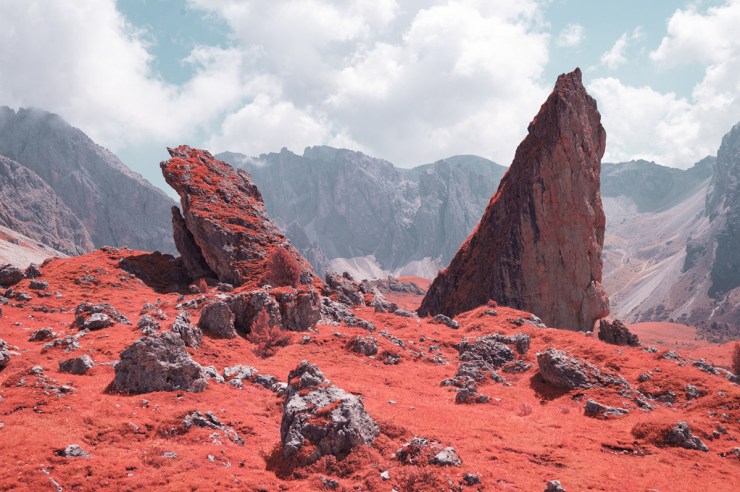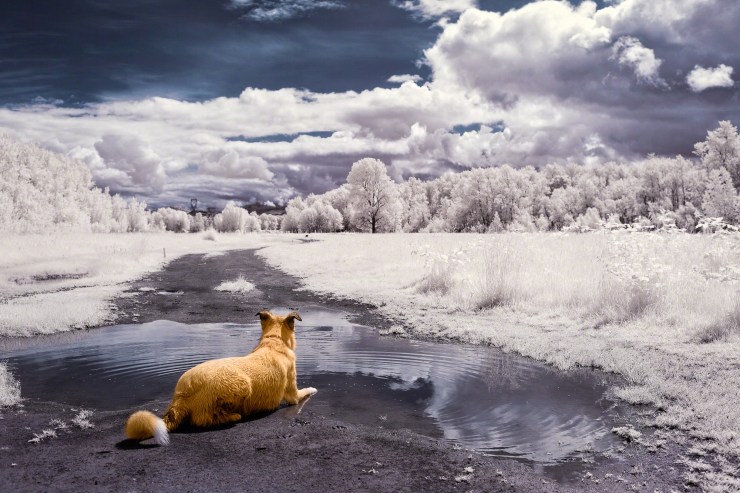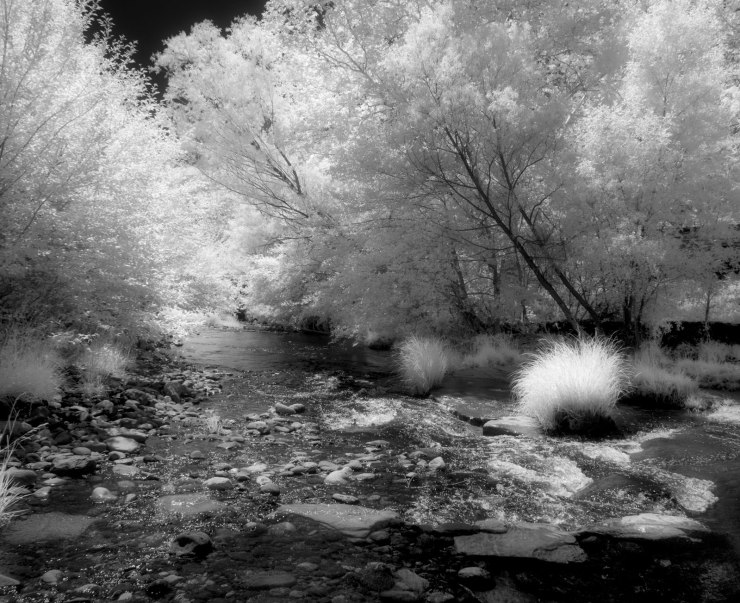Infrared photography is one of the most interesting techniques we can dive into today, especially when we’re feeling a little experimental. Despite the technical challenges, the results also tend to be rewarding and fascinating, since it essentially involves capturing light in the invisible spectrum.
If you’re interested but don’t know where to start, we have a bunch of learning — and inspiring — resources to help you.
Alpine landscapes turned alien worlds

First, allow us to give you some motivation by backtracking for a bit on a project by Munich-based Roland Krämer. Titled “The Coral Mountains Series,” his body of work shows various regions of the Alps seemingly carpeted with coral red vegetation in place of lush greens. This otherworldly imagery was made possible by a modified camera whose infrared light filter was removed.
In his “The Strange Series” project, he explains that plants and trees appear more colorful than buildings and water because of the green pigment chlorophyll. It prominently reflects the infrared light that are typically invisible to our eyes.
This colorful approach is just one of the different visual effects that you can achieve through infrared photography.
Tips for shooting with an infrared-converted camera

Shooting with a modified camera for this specialized photography will definitely be a different from using your usual DSLR. But our infrared photography tips and tricks will get you through the basics and help you get an idea on what to expect from the experience.
The tutorial above covers quick tips for setting the white balance, focusing, shooting in RAW, going the black and white route (which yields spectacular results, by the way) and post-processing. We also suggest bookmarking our detailed tutorials on processing infrared images in Lightroom and Photoshop and toning infrared photos for when you’re done taking your first snaps.
Tips for using infrared lens filters

If you don’t mind doing a deep dive into more technical stuff, we also have a tutorial that covers infrared lens filters that will allow you to shoot infrared images without modifying the camera itself. These filters will block off visible light so only infrared light passes through the lens.
This may be a better option if you want to see first if the results and process are to your liking. It’s also a cheaper and possibly less intimidating way to get into infrared photography, if you’re not yet ready to buy a converted camera (or have one of yours modified).
Infrared is perfect for midday shooting outdoors

As our very own Bob Coates said in his detailed guide, midday isn’t usually ideal for shooting because of the high contrast. But it’s actually the best time for infrared photography. “There’s high contrast, but it renders as dramatic with blue skies trending toward black and clouds picking up this iridescent glow. Green vegetation will provide white tones.”
More infrared photography resources
In case you haven’t yet, we also invite you to check out Photofocus on Flipboard to view our collection of infrared photography resources so far. We update our storyboards regularly with more tips, tutorials, and inspiring photography projects, so make sure to follow as well!
Tell your story with the second annual Visual Storytelling Conference!
Experience four days of interactive, online training sessions featuring a range of educational content with experienced photographers and content creators. This free event kicks off with a series of technical boot camps to build essential skills, followed by live, online sessions on photography, video, business and social media. Join live from March 10-13, 2022!
